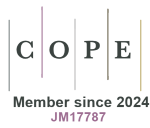Management of patients with chronic rhinosinusitis and nasal polyposis in Italy: expert opinion on the diagnostic-therapeutic approach
DOI:
https://doi.org/10.33393/ao.2023.2555Keywords:
Biological drugs, Chronic rhinosinusitis with nasal polyps, CRSwNP, Nasal polyposis, QoL, Quality of life, Systemic steroidsAbstract
Chronic rhinosinusitis (CRS) is an inflammatory disease that affects the nasal mucosa and the paranasal sinuses; it can be characterized by nasal polyposis (CRSwNP) in up to 30% of cases. CRSwNP is frequently associated with bronchial asthma and patients affected show a greater severity of clinical disease with a significantly worse quality of life.
CRSwNP shows predominantly an underlying activation of type 2 inflammatory pathways with the increase of eosinophils, IgE, interleukin (IL)-4, IL-5 and IL-13. Biological drugs that target inflammatory molecules are currently a therapeutic option recognized by guidelines for the treatment of uncontrolled form of the disease.
The correct definition of the target patient, the type of biological drug to be used and the timing of intervention are crucial to guarantee a personalized therapy and optimize the cost/effectiveness of the treatment.
A panel of Italian pneumologists, allergologists, immunologists and ear, nose and throat specialists discussed in a series of virtual expert meetings the main criteria for patient characterization and therapeutic decision, highlighting multidisciplinarity, the constant dialogue between doctor and patient, the organization in networks and the use of registries as strategies to implement the management of CRSwNP patients, to reach the personalization of the treatment and the best use of the biological drug(s).
References
- Bachert C, Marple B, Schlosser RJ, et al. Adult chronic rhinosinusitis. Nat Rev Dis Primers. 2020;6(1):86. https://doi.org/10.1038/s41572-020-00218-1 PMID:33122665
- Fokkens WJ, Lund VJ, Hopkins C, et al. European Position Paper on Rhinosinusitis and Nasal Polyps 2020. Rhinology. 2020;58(suppl S29):1-464. https://doi.org/10.4193/Rhin20.401PMID:32077450
- De Corso E, Bilò MB, Matucci A, et al. Personalized Management of Patients with Chronic Rhinosinusitis with Nasal Polyps in Clinical Practice: A Multidisciplinary Consensus Statement. J Pers Med. 2022;12(5):846. https://doi.org/10.3390/jpm12050846 PMID:35629268
- Bachert C, Bhattacharyya N, Desrosiers M, Khan AH. Burden of Disease in Chronic Rhinosinusitis with Nasal Polyps. J Asthma Allergy. 2021;14:127-134. https://doi.org/10.2147/JAA.S290424 PMID:33603409
- Dietz de Loos DA, Hopkins C, Fokkens WJ. Symptoms in chronic rhinosinusitis with and without nasal polyps. Laryngoscope. 2013;123(1):57-63. https://doi.org/10.1002/lary.23671PMID:23280941
- Bachert C, Gevaert P, Hellings P. Biotherapeutics in Chronic Rhinosinusitis with and without Nasal Polyps. J Allergy Clin Immunol Pract. 2017;5(6):1512-1516. https://doi.org/10.1016/j.jaip.2017.04.024 PMID:28526278
- Mullol J, Azar A, Buchheit KM, Hopkins C, Bernstein JA. Chronic Rhinosinusitis With Nasal Polyps: Quality of Life in the Biologics Era. J Allergy Clin Immunol Pract. 2022;10(6):1434-1453.e9. https://doi.org/10.1016/j.jaip.2022.03.002 PMID:35306180
- European Medicines Agency. Dupixent (Dupilumab). Summary of Product Characteristic 2021 Online: https://www.ema.europa.eu/en/documents/product-information/dupixent-epar-product-information_en.pdf.
- European Medicines Agency. Xolair (Omalizumab). Summary of Product Characteristic 2020 Online: https://www.ema.europa.eu/en/documents/product-information/xolair-epar-product-information_en.pdf.
- Fokkens WJ, Lund V, Bachert C, et al. EUFOREA consensus on biologics for CRSwNP with or without asthma. Allergy. 2019;74(12):2312-2319. https://doi.org/10.1111/all.13875PMID:31090937
- Kuruvilla ME, Lee FE, Lee GB. Understanding Asthma Phenotypes, Endotypes, and Mechanisms of Disease. Clin Rev Allergy Immunol. 2019;56(2):219-233. https://doi.org/10.1007/s12016-018-8712-1 PMID:30206782
- Pavlidis S, Takahashi K, Ng Kee Kwong F, et al; on behalf of the U-BIOPRED Study Group. “T2-high” in severe asthma related to blood eosinophil, exhaled nitric oxide and serum periostin. Eur Respir J. 2019;53(1):1800938. https://doi.org/10.1183/13993003.00938-2018PMID:30578390
- Paoletti G, Malvezzi L, Riccio AM, et al. Nasal cytology as a reliable non-invasive procedure to phenotype patients with type 2 chronic rhinosinusitis with nasal polyps. World Allergy Organ J. 2022;15(11):100700. https://doi.org/10.1016/j.waojou.2022.100700 PMID:36321070
- Workman AD, Kohanski MA, Cohen NA. Biomarkers in Chronic Rhinosinusitis with Nasal Polyps. Immunol Allergy Clin North Am. 2018;38(4):679-692. https://doi.org/10.1016/j.iac.2018.06.006 PMID:30342588
- Danielides G, Lygeros S, Kanakis M, Naxakis S. Periostin as a biomarker in chronic rhinosinusitis: A contemporary systematic review. Int Forum Allergy Rhinol. 2022;12(12):1535-1550. https://doi.org/10.1002/alr.23018 PMID:35514144
- Gevaert P, Calus L, Van Zele T, et al. Omalizumab is effective in allergic and nonallergic patients with nasal polyps and asthma. J Allergy Clin Immunol. 2013;131(1):110-6.e1. https://doi.org/10.1016/j.jaci.2012.07.047 PMID:23021878
- Calabrese C, Seccia V, Pelaia C, et al. S. aureus and IgE-mediated diseases: pilot or copilot? A narrative review. Expert Rev Clin Immunol. 2022;18(6):639-647. https://doi.org/10.1080/1744666X.2022.2074402 PMID:35507006
- Damask C, Chen M, Holweg CTJ, Yoo B, Millette LA, Franzese C. Defining the Efficacy of Omalizumab in Nasal Polyposis: A POLYP 1 and POLYP 2 Subgroup Analysis. Am J Rhinol Allergy. 2022;36(1):135-141. https://doi.org/10.1177/19458924211030486 PMID:34382434
- Zheng M, Sima Y, Liu C, et al. Clinical effectiveness and potential predictability of omalizumab in patients with difficult-to-treat chronic rhinosinusitis with nasal polyps and asthma based on the noninvasive markers - A real-life prospective study. World Allergy Organ J. 2022;15(10):100702. https://doi.org/10.1016/j.waojou.2022.100702 PMID:36254182
- Morandini P, Laino ME, Paoletti G, et al. Artificial intelligence processing electronic health records to identify commonalities and comorbidities cluster at Immuno Center Humanitas. Clin Transl Allergy. 2022;12(6):e12144. https://doi.org/10.1002/clt2.12144 PMID:35702725
- European Medicines Agency. Nucala (Mepolizumab). Summary of Product Characteristic 2022 Online: https://www.ema.europa.eu/en/documents/product-information/nucala-epar-product-information_en.pdf.









